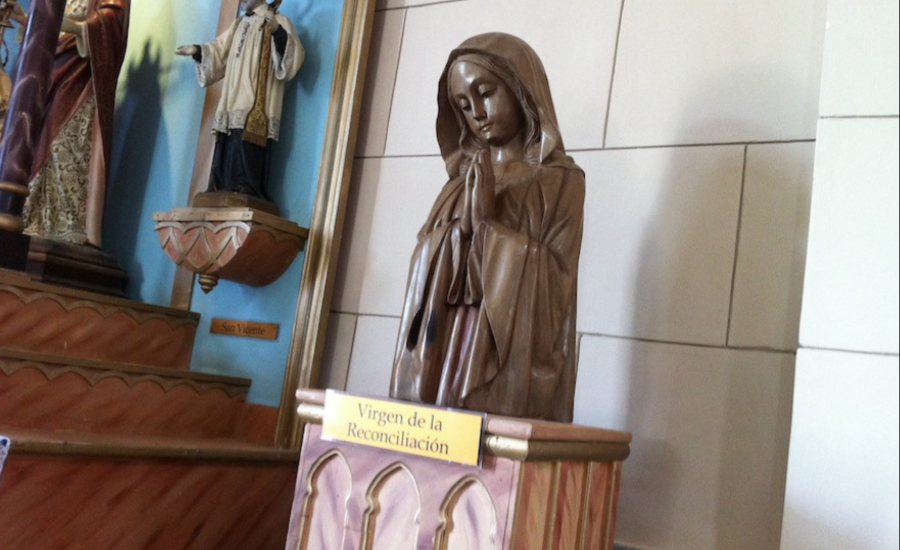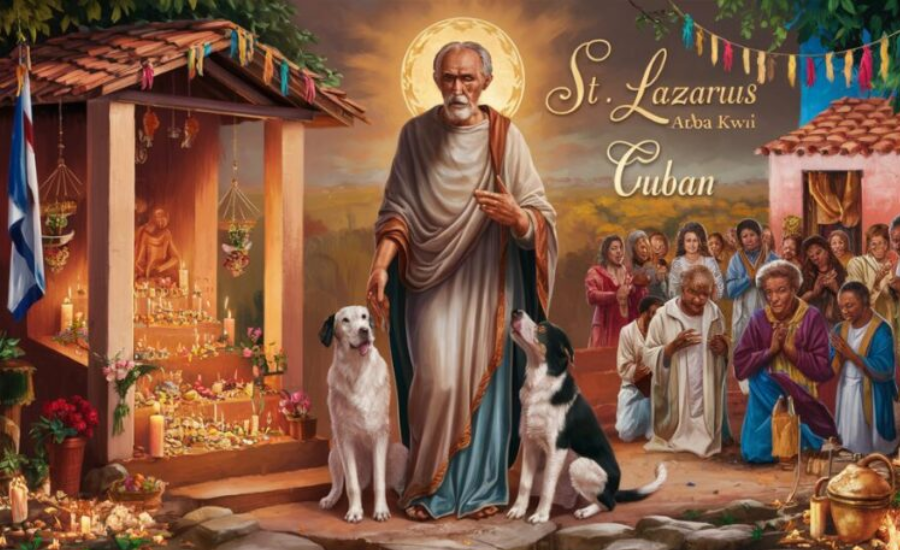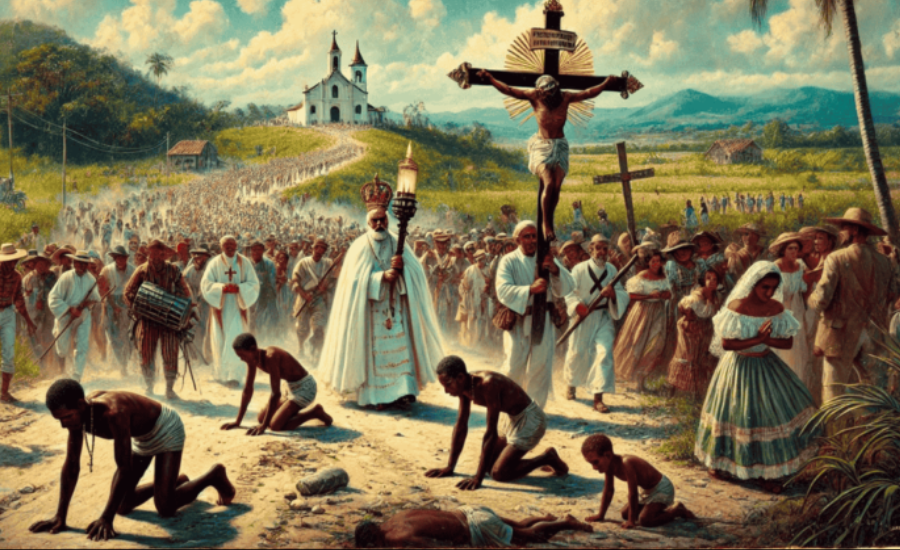st lazarus abba qui cuban When the name St. Lazarus is mentioned, many people immediately think of the biblical figure whom Jesus Christ raised from the dead. However, there exists another significant persona known as St. Lazarus Abba Qui, who is deeply revered in Afro-Cuban religious traditions. This essay explores the historical and cultural significance of St. Lazarus Abba Qui within Cuban society, highlighting his influence and the rich spiritual practices associated with him.
St. Lazarus Abba Qui has a unique historical background that intertwines with the African heritage of Cuba. His identity is rooted in the syncretism of African and Christian beliefs, embodying a blend of spirituality that resonates with many Cubans. His veneration is not merely a remnant of religious practices; it reflects a broader cultural narrative that underscores the resilience and adaptability of Afro-Cuban communities.
The cultural importance of St. Lazarus Abba Qui extends beyond religious observance. He symbolizes hope, healing, and protection, serving as a guardian figure for those who seek solace in their faith. Rituals dedicated to him are rich in symbolism and often involve offerings, prayers, and communal gatherings that reinforce social bonds and cultural identity.
Through this exploration, we aim to provide a deeper understanding of St. Lazarus Abba Qui’s role in contemporary Cuban life. By examining his historical origins, cultural relevance, and the rituals that honor him, we uncover the profound respect he commands among many Cubans, illuminating the ongoing legacy of his spiritual influence.
What is the Importance of St. Lazarus Abba Qui in Cuban Culture?

A notable and meaningful aspect of the representation of St. Lazarus Abba Qui in Afro-Cuban traditions is his association with dogs. In these religious practices, St. Lazarus is often linked to Babalu Aye and is typically depicted alongside two faithful dogs. This imagery carries significant depth, symbolizing loyalty, compassion, and the dignity that comes from enduring suffering.
The portrayal of dogs in these representations goes beyond mere embellishment; it is rich in symbolic meaning. Dogs are seen as loyal companions who stand by their owners through adversity and marginalization. This perspective reinforces the notion that every individual, irrespective of their struggles or societal standing, merits compassion and respect. In Cuban culture, dogs are revered as powerful symbols of loyalty and guardianship, amplifying this message.
Moreover, the connection between St. Lazarus and his canine companions serves to communicate a broader social message: that the sick, impoverished, and marginalized are inherently valuable and deserving of kindness and respect. This symbolic layer enhances our understanding of the veneration of St. Lazarus Abba Qui, emphasizing his role not just as a healer but also as a protector of all who suffer. Through this imagery, St. Lazarus emerges as a beacon of hope and humanity, advocating for the dignity and care that every individual deserves.
An Overview of Santería
To truly understand the significance of St. Lazarus Abba Qui in Cuban culture, it is essential to explore Santería, the religious framework where his worship is most pronounced. Santería, also referred to as Regla de Ocha, emerged in Cuba during the period of the transatlantic slave trade. Enslaved Africans brought their rich Yoruba spiritual traditions to the Caribbean, which blended with the Roman Catholic beliefs of the time. This cultural fusion resulted in a syncretic religion where Yoruba deities, known as Orishas, were aligned with Catholic saints.
Within this religious context, Babalu Aye serves as a vital Orisha who corresponds to St. Lazarus in Catholicism. Revered for his roles in illness, healing, and protection, Babalu Aye holds a significant place in the hearts of Santería practitioners, symbolizing hope and recovery.
The Integration of Catholicism and Santería in Cuban Culture
The veneration of St. Lazarus Abba Qui in Cuban culture serves as a striking example of religious syncretism, where diverse spiritual traditions merge to create a distinct and unified practice. This integration is particularly apparent in the interplay between the Catholic devotion to St. Lazarus and the Santería worship of Babalu Aye. Such a fusion highlights the adaptability and resilience of religious expressions, enriching the spiritual lives of countless Cubans.
In this syncretic practice, the Catholic representation of St. Lazarus—often depicted as a frail, elderly figure—stands in stark contrast to the Santería portrayal of Babalu Aye. Catholic imagery typically depicts St. Lazarus in a vulnerable state, mirroring his biblical narrative of suffering and miraculous restoration. In contrast, altars dedicated to Babalu Aye in Santería showcase him clad in simple burlap, often marked with sores and frequently using crutches. This depiction emphasizes his identity as a deity of healing and protection, illustrating his profound bond with individuals facing illness and adversity.
The Influence of St. Lazarus Abba Qui on Contemporary Cuban Society
The impact of St. Lazarus Abba Qui in contemporary Cuban society transcends mere religious devotion, significantly influencing the nation’s cultural and social landscape. His veneration embodies the resilience, faith, and hope that are fundamental to the Cuban identity, especially during challenging times. Many Cubans turn to St. Lazarus for protection and guidance, underscoring his vital role as a source of strength and comfort in their daily lives.
The Integration of Catholicism and Santería in Cuban Culture
The worship of St. Lazarus Abba Qui represents a compelling instance of religious syncretism, where Catholic and Santería traditions blend to create a meaningful spiritual practice. This fusion intertwines the Catholic reverence for St. Lazarus with the Santería devotion to Babalu Aye, resulting in a distinctive spiritual tradition that holds significant importance for many in Cuba.
This synthesis is evident in both ritualistic practices and artistic representations. For example, Catholic churches often feature statues of St. Lazarus depicted as a frail elderly man, while Santería altars typically showcase Babalu Aye dressed in simple burlap, marked with sores and often leaning on crutches. Both representations carry deep spiritual significance and highlight the dual nature of this revered figure within Cuban culture.
The Focus on Humility and Respect
St. Lazarus Abba Qui is profoundly honored for embodying humility and respect, virtues central to his worship. Devotees approach him with genuine intent, seeking his assistance or protection, believing that such sincerity will invoke divine blessings. This emphasis on humility extends beyond St. Lazarus, resonating throughout both Santería and Catholic practices. In these spiritual traditions, connecting with the divine requires a pure heart and sincere intentions. This principle reinforces the necessity of engaging in spiritual practices with respect and true reverence, aligning one’s actions with values of humility and gratitude.
The Influence of St. Lazarus Abba Qui on Modern Cuban Society

The influence of St. Lazarus Abba Qui in Cuban society extends far beyond mere religious practices, significantly shaping the cultural and social landscape of the nation. His veneration embodies the unwavering faith, resilience, and hope of the Cuban people, especially during difficult times. In moments of adversity, many Cubans turn to St. Lazarus for not just spiritual guidance but also emotional and psychological support. His presence as a source of strength and reassurance is evident in the various practices and traditions that honor him. This deep connection illustrates how integral St. Lazarus is to the essence of Cuban life, serving as a symbol of comfort and stability in the face of uncertainty.
St. Lazarus and the Quest for Health and Healing
In the context of health and healing, St. Lazarus Abba Qui is widely recognized as a powerful figure associated with restorative powers. Many devotees turn to him for assistance with a wide array of health concerns, ranging from minor issues to serious illnesses. This belief in his ability to bring relief and healing is deeply entrenched in tradition, with numerous individuals crediting miraculous recoveries to his intervention. Faith in his healing prowess is not only a spiritual conviction but also an integral aspect of the community’s approach to health and well-being.
Moreover, the rituals and traditions linked to St. Lazarus extend beyond physical healing, providing significant emotional comfort and support. These practices foster a sense of community and collective purpose among devotees, creating a supportive network for those in need. The shared devotion cultivates an environment where individuals can find solace and reassurance, reinforcing the communal ties that are central to the reverence for St. Lazarus.
Festivals and Cultural Celebrations in Honor of St. Lazarus
The Feast Day of St. Lazarus stands out as a significant cultural and religious celebration in Cuba, marking an occasion that goes beyond simple ritual observance. This vibrant festival features a diverse array of cultural expressions, including music, dance, culinary delights, and community gatherings. It serves as a vital opportunity for Cubans to reconnect with their cultural roots, celebrate their faith, and honor the enduring spirit of resilience and hope that St. Lazarus represents.
On this annual occasion, the streets come alive with dynamic activities, uniting people from various backgrounds in tribute to St. Lazarus. The celebration not only reinforces religious and cultural connections but also serves as a platform for expressing gratitude and reverence. For many participants, the Feast Day offers a chance to reflect on the values embodied by St. Lazarus while celebrating the community’s collective strength and unity. This event highlights the profound influence of St. Lazarus’s legacy on Cuban culture and society.
Rituals and Traditions Celebrating St. Lazarus Abba Qui in Cuban Culture
Rituals honoring St. Lazarus Abba Qui are an integral part of Cuban spirituality, characterized by their vibrancy and deep significance. Devotees create altars decorated with a variety of offerings, including fresh flowers, lit candles, and images representing the saint. These altars serve as focal points for prayers and acts of devotion, highlighting the profound respect individuals have for St. Lazarus.
One of the most important celebrations takes place on December 17th, when a significant pilgrimage to the El Rincón shrine, located near Havana, occurs. Pilgrims journey to this sacred location, bringing with them symbolic items such as crosses and small statues of St. Lazarus. This pilgrimage reflects the deep reverence followers hold for the saint and their commitment to their faith.
Food also plays a crucial role in these observances, as many prepare special dishes as an expression of gratitude and devotion. Sharing these meals with family and friends not only reinforces community ties but also celebrates the impact of St. Lazarus on their lives.
Additionally, animal offerings are an important aspect of these rituals. Some devotees choose to present roosters or other livestock as a sign of respect and a hopeful request for blessings from St. Lazarus. This practice emphasizes the reciprocal relationship between the devotees and their revered figure, showcasing the deep connection they share.
Key Locations and Celebrations for St. Lazarus in Cuba
Cuba is home to several significant sites dedicated to St. Lazarus Abba Qui Cuban, highlighting his deep spiritual importance for countless individuals. Among these, the El Rincón shrine, located just outside Havana, stands out as a prominent pilgrimage destination. Each year, on December 17th, thousands of devotees converge on this sacred site to partake in a vibrant celebration. The atmosphere is filled with altars adorned with candles and flowers, and the air resonates with traditional music and dance, creating a unique fusion of cultural expression and religious devotion.
Another key site is the Basilica de Nuestra Señora del Cobre in Santiago de Cuba. Here, worshippers pay homage to St. Lazarus alongside the Virgin Mary, reflecting the interconnectedness of these revered figures within Cuban spirituality.
In addition to these major events, local communities throughout Cuba participate in personal rituals and celebrations, emphasizing their individual connections to St. Lazarus Abba Qui Cuban. These grassroots practices cultivate a sense of shared faith and devotion, further embedding the saint into the daily lives of his followers, enriching their spiritual experiences and communal bonds.
The Worldwide Impact of Devotion to St. Lazarus Abba Qui Cuban
While St. Lazarus Abba Qui Cuban is predominantly associated with Cuban religious traditions, his influence reaches far beyond the shores of the island. The Cuban diaspora, especially in cities like Miami that boast large Cuban populations, has carried this veneration to new locales. Here, devotees continue to celebrate St. Lazarus with the same passion and commitment seen in Cuba.
This widespread devotion highlights the enduring significance of St. Lazarus and the profound emotional bonds that followers share with him. His messages of hope, healing, and protection resonate strongly with people, transcending geographical boundaries and cultural differences. This connection illustrates the universal appeal of his teachings and the communal spirit that surrounds his worship.
Interconnections with Various Religious Traditions
St. Lazarus Abba Kwi’s association with both Santería and Catholicism reveals fascinating connections with various other religious traditions. For example, the practice of venerating saints within Catholicism parallels the worship of spirits in Afro-Caribbean religions like Vodou in Haiti. Both belief systems emphasize seeking the assistance of spiritual entities for various aspects of life, including protection, healing, and guidance.
This broader relationship underscores a universal human desire for spiritual support, demonstrating how different cultures and traditions uniquely address these common needs through their specific practices and beliefs.
Incorporating St. Lazarus Abba Kwi into Your Spiritual Practices

To create a meaningful space for honoring St. Lazarus Abba Kwi, consider decorating it with images or symbols that represent him, including the iconic dog associated with his story. Enhance the ambiance with candles, fresh flowers, and fruits, fostering a respectful and serene environment.
Dedicate time each week for intentional reflection and prayer focused on St. Lazarus. Use this opportunity to share your hopes, worries, and dreams with him, cultivating a deeper personal relationship.
Incorporating specific rituals into your routine can also strengthen your connection to St. Lazarus. For instance, you might light a candle on his feast day or participate in local festivities dedicated to him. These acts of devotion serve to reinforce your spiritual bond.
Additionally, consider making offerings of food or beverages during your moments of prayer. Such gestures of gratitude can enrich your practice and serve as a tangible expression of your reverence.
Consistency in these rituals is vital; by regularly engaging in these practices, you can weave St. Lazarus Abba Kwi into the fabric of your daily life, enhancing your overall spiritual journey.
Final Words
St. Lazarus Abba Qui stands as a powerful figure in Cuban culture, representing a unique blend of African and Christian traditions that enrich the spiritual lives of many. His veneration, steeped in hope, healing, and respect for the marginalized, underscores the resilience of Afro-Cuban communities and their deep-rooted cultural identity. Through rituals, festivals, and personal practices, St. Lazarus continues to inspire and uplift countless individuals, embodying a legacy that transcends time and place.
By understanding the significance of St. Lazarus Abba Qui, we not only gain insight into the rich tapestry of Cuban spirituality but also recognize the universal themes of compassion, healing, and the quest for dignity that resonate across cultures. His enduring impact serves as a reminder of the strength found in faith and community, and the importance of honoring those who embody these values in our lives.
Stay in the loop for upcoming updates and alerts! Creative Insider


